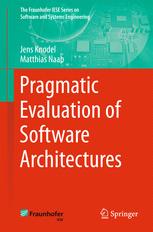

Most ebook files are in PDF format, so you can easily read them using various software such as Foxit Reader or directly on the Google Chrome browser.
Some ebook files are released by publishers in other formats such as .awz, .mobi, .epub, .fb2, etc. You may need to install specific software to read these formats on mobile/PC, such as Calibre.
Please read the tutorial at this link: https://ebookbell.com/faq
We offer FREE conversion to the popular formats you request; however, this may take some time. Therefore, right after payment, please email us, and we will try to provide the service as quickly as possible.
For some exceptional file formats or broken links (if any), please refrain from opening any disputes. Instead, email us first, and we will try to assist within a maximum of 6 hours.
EbookBell Team

0.0
0 reviewsThorough and continuous architecting is the key to overall success in software engineering, and architecture evaluation is a crucial part of it. This book presents a pragmatic architecture evaluation approach and insights gained from its application in more than 75 projects with industrial customers in the past decade. It presents context factors, empirical data, and example cases, as well as lessons learned on mitigating the risk of change through architecture evaluation.
By providing comprehensive answers to more than 100 typical questions and discussing more than 60 frequent mistakes and lessons learned, the book allows readers to not only learn how to conduct architecture evaluations and interpret its results, but also to become aware of risks such as false conclusions, manipulating data, and unsound lines of argument. It equips readers to become confident in assessing quantitative measurement results and recognize when it is better to rely on qualitative expertise.
The target readership includes both practitioners and researchers. By demonstrating its impact and providing clear guidelines, data, and examples, it encourages practitioners to conduct architecture evaluations. At the same time, it offers researchers insights into industrial architecture evaluations, which serve as the basis for guiding research in this area and will inspire future research directions.